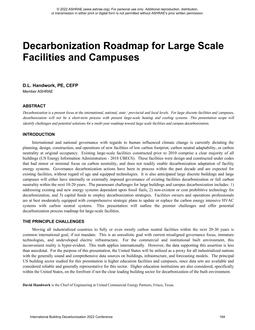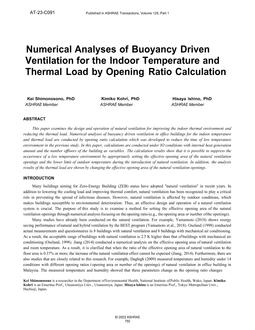
LV-22-C003 — Developing an Automated Workflow for Non-Residential Building Retrofit as a Function of Usage
Click here to purchase
Many countries have committed to zero carbon emissions by 2050 and have set ambitious targets for net-zero energy buildings in the coming years. To achieve this goal, highly insulated envelopes need to be combined with renewable energy generation. Energy conservation measures (ECM)s are needed as practical steps toward higher energy efficiency. At the same time, it is important to consider the building occupants’ interaction with the energy supply and distribution systems as well as the control of thermostats, window openings, shading systems, or similar. Quantifying the occupant-related effects on the building energy can help to improve the building performance accuracy and reduce grid electricity stress.
This paper proposes an automated workflow for analyzing the retrofits of non-residential buildings and the impact of their usage. The methodology is structured to follow three consecutive steps: (1) Extracting and modifying a Geo-based geometry model and assign attributes; (2) Energy modeling setup and parametric investigation; (3) Evaluating multi-objective scenarios for a range of construction, usages, and occupancy patterns.
The methodology is applied to a case study on the re-use of an existing unoccupied industrial building complex located in Montreal, Canada, as part of a C40 re-inventing cities competition. The building geometry and surrounding context are processed and connected to an energy simulation software in order to examine a range of construction modifications, mechanical systems together with occupancy patterns. A construction and occupancy library has been developed to enrich the parametric investigation of the study. Various scenarios were investigated in a parametric process to guide design decisions for improved building performance. Different retrofit strategies that achieve the targeted objectives were compared in multiple aspects, such as energy, operational carbon, and embodied carbon. The presented workflow has the potential for expansion towards similar cases and building types. The methodology aims to support the decision-making for multiple stakeholders such as building owners, architects, engineers, and policymakers. Future investigations include developing a workflow that upscales the methodology to a broader spatial scale in a bottom-up approach.
Keywords: Energy Conservation Measures, Building retrofit, Occupant- related profiles, Energy Efficiency
Product Details
- Published:
- 2022
- Number of Pages:
- 9
- File Size:
- 1 file , 2.9 MB
- Product Code(s):
- D-LV-22-C003
- Note:
- This product is unavailable in Russia, Belarus

